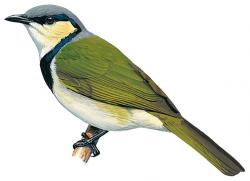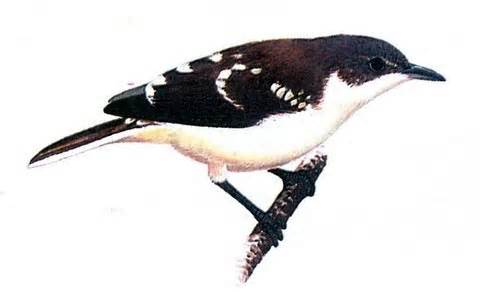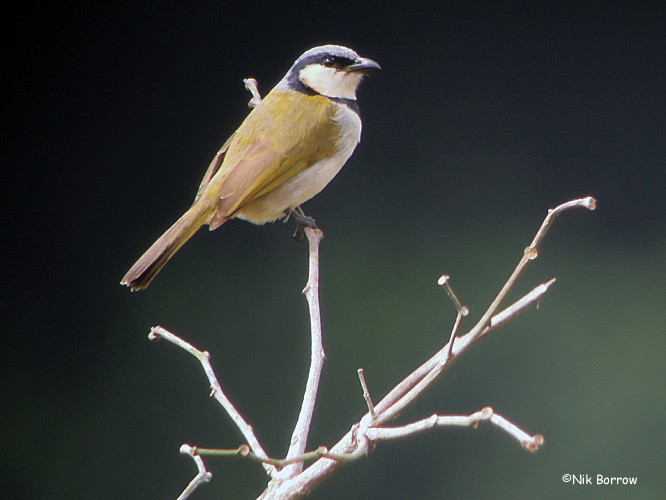
Neolestes torquatus
TAXONOMY
Neolestes torquatus Cabanis, 1875, Chinchoxo, Loango Coast.
TAXONOMY
controversial, some morphological characters ally
Neolestes with bulbuls, some ally it with shrikes (Malaconotidae,
Laniidae, or Prionopidae). DNA and
BEHAVIOR
al data suggest a
closer relationship to bulbuls.
OTHER COMMON NAMES
French: Bulbul а collier noir; German: Rьttelbьlbьl; Spanish:
Bulbul de Collar Negro.
PHYSICAL CHARACTERISTICS
6.3 in (16 cm), 0.7–1 oz (19–27 g). Distinctive, forehead to
hindneck gray, black mask continues down neck to form a
broad black band across the white breast. Back and tail olivegreenish
brown, wings with yellow stripe. Sexes alike. Juvenile
resembles adult but duller, crown and neck greenish.
DISTRIBUTION
South central Africa, Gabon, Congo, Angola, Zambia, and Zaire.
HABITAT
Wooded savanna, grassland.
BEHAVIOR
Territorial. Found singly, in pairs, or in small groups of three
to four birds, will perch on fence posts. Fluid song of “tji-li-li”
and “dee-de-de-de-de.” Resident.
FEEDING ECOLOGY AND DIET
Mainly eats insects and fruit, often foraging in tall grasses.
REPRODUCTIVE BIOLOGY
Solitary nester with some distance between territories (out of
range of song). Two eggs laid in untidy nest; young fed by
both parents, mainly fruit. Feigns injury to distract predators
from nest.
CONSERVATION STATUS
Not threatened. Locally common, though
DISTRIBUTION
spotty.
SIGNIFICANCE TO HUMANS
None known.
Photo Gallery of - Black-collared bulbul




 Animalia Life
Animalia Life